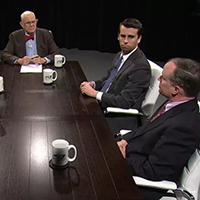Numbers you should know about Obamacare in NC
Published December 11, 2014
by NC Policy Watch, December 10, 2014.
New fact sheet: “The Affordable Care Act is working in North Carolina”
[Editor’s note: Health policy experts at the Washington, DC-based Center for American Progress released the following very encouraging, numbers-driven fact sheet today about the growing success of the Affordable Care Act in North Carolina and its brightening prospects in the months and years ahead. We’re happy to share it with N.C. Policy Watch readers.]
With a new open enrollment period upon us, here are the facts about how health care reform is working in North Carolina. The insurance marketplace is here to stay, and people will continue to have access to quality plans and financial assistance through the Affordable Care Act, or ACA. As more and more people obtain coverage through the ACA, they will gain a better understanding of what the law means for them. A recent Gallup poll found that the majority of Americans who purchased new health insurance policies through the ACA marketplace over the past year are as satisfied as other Americans with their health insurance: 71 percent rated their coverage “excellent” or “good,” compared with 72 percent among all those who have coverage.
Last year, more than 390,000 North Carolinians obtained health insurance thanks to the ACA. Among those, an overwhelming majority qualified for financial assistance to help cover the cost of care. Whether you are thinking of signing up for health insurance or have already purchased coverage on the marketplace, shopping around during this year’s open enrollment period could mean big savings.
North Carolina by the numbers
Who has benefited
• 357,584 North Carolinians signed up for health care through the federal exchange. During last year’s open enrollment period, 357,584 people—more than 60 percent of all eligible North Carolinians—signed up for health insurance on the federal exchange.
• More than 9 in 10 North Carolinians qualified for tax credits that, on average, made plans 79 percent cheaper. Ninety-one percent of North Carolinians who signed up for a plan received tax credits to make their insurance more affordable. Tax credits lowered the cost of the average plan from $381 to $81, a 79 percent decrease.
• 36,044 North Carolinians signed up for health care through Medicaid. During the same open enrollment period, 36,044 people signed up for health insurance through Medicaid, even though North Carolina did not expand the program.
• North Carolina’s uninsured rate fell by 3.7 percentage points after open enrollment. From 2013 to mid-2014, North Carolina’s uninsured rate decreased from 20.4 percent to 16.7 percent.
Who can still benefit
• In North Carolina, 16.7 percent of residents are still uninsured. Despite the success of the ACA in allowing thousands of North Carolinians to sign up for health coverage, 16.7 percent of the state still lacks insurance.
• Financial assistance is available, and you could pay as little as $129 per month for coverage. A 40-year-old nonsmoker who earns $30,000 annually in North Carolina can find a bronze plan that costs $129 per month once tax credits are factored in and a silver plan that costs $208 per month.
• 357,000 North Carolinians could benefit from Medicaid expansion if North Carolina lawmakers put people over politics. Because Gov. Pat McCrory (R) and other Republican lawmakers refused to accept Medicaid expansion under the ACA, 357,000 North Carolinians fall into North Carolina’s “coverage gap,” meaning their incomes are higher than the $8,860-per-year limit—for a family of three in 2014—to qualify for traditional Medicaid but too low to qualify for insurance subsidies on the exchange.
• North Carolina turned down $1.7 billion in economic growth by refusing to expand Medicaid. If North Carolina had accepted federal funding to expand Medicaid in 2014, the state would have seen its economy grow by $1.7 billion over two years.
Have insurance? Shopping around could save you money
• The number of insurers participating in North Carolina’s exchanges increased from two to three, increasing competition and lowering rates. An additional insurer joined North Carolina’s federal exchange for this year’s open enrollment period, bringing the total number to three insurers. These insurers offer 1.5 times as many plans on the exchange as last year.
• Choosing lower-cost premium plans could result in savings of $2 billion. If everyone nationwide who previously signed up in the marketplace switched to the lowest-cost premium plan in the same metal tier—silver, for example—their combined actions would create $2 billion in savings for consumers and taxpayers.
• Sixty percent of North Carolinians eligible for tax credits could benefit from a premium decrease. In North Carolina, 60 percent of people eligible for tax credits on the exchange can purchase a silver plan that costs less than it did last year.
Click here to read this fact sheet in its original format (including footnotes). For more information, contact Benton Strong of the Center for American Progress at bstrong@americanprogress.org.
December 12, 2014 at 10:58 am
Richard Bunce says:
"357,000 North Carolinians could benefit from Medicaid expansion if North Carolina lawmakers put people over politics."
357,000 North Carolinians could have benefited from the Democratic Majority in Congress in 2010 NOT placing the minimum income requirement on the ACA Marketplace tax credit/subsidy and CSR program AND they would have had real healthcare insurance not the substandard Medicaid coverage not accepted by many providers.







